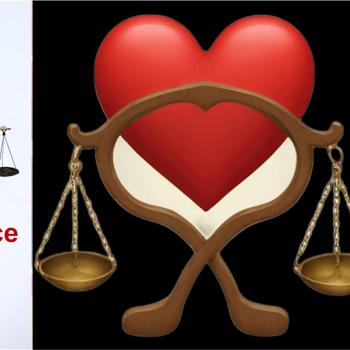Thorn makes relatively frequent reference to "God Hirself," and explains that the latter reflexive pronoun is a gender-neutral pronoun (which, alas, in the pronunciation of most Americans is indistinguishable from "herself"). This sort of linguistic usage is good and appropriate. However, when referring to the readers and the potential audience, Thorn's usage is usually along the lines of "brothers and sisters" and other conventionally binary gendered usages. The wider audience of this book is likely to be one of those potential genders; a narrower audience, including myself, is not. Having images of deities that are affirming of our alternative gender identities is very useful and good; but then not having that gender identity recognized amongst the human sphere by someone presenting those positive and affirming divine models seems incongruous.
As a polytheist who draws from ancient Greek and Egyptian sources, I like sphinxes a great deal; the Obelisk of Antinous indicates that they were part of his temples, and I've seen some syncretistic Graeco-Egyptian temples that have both Greek-style and Egyptian-style sphinxes in their processional ways leading to the temple. The structuring schema of Thorn's book is based on the Four Powers of the Sphinx, which are identified with its different animal components. These four animal images are also found in the four symbols of the Evangelists of Christian tradition (Matthew the man, Mark the lion, Luke the bull, John the eagle), and also in images of archangels and other such beings. Three of the four images (eagle, bull, and lion) are also connected to the Tetrad, the newly emergent deities that I worship. For all sorts of reasons, I think this is an appealing schema; but, having reached the end of Thorn's book, I question how useful it was in the context of the book. Much of the discussion throughout the first three sections seemed to be parallel, if not in some places extremely similar, such that the subject of desire and its pursuit as interpreted through the powers of To Know, To Will, and To Dare began to sound quite alike. And, with the addition of the fifth power, To Manifest, which occurs often simultaneously with the exercise of the other four powers, it all begins to feel a bit infinitely recursive, and perhaps not usefully so.
I see many similarities in parts of the journey that Thorn's life has taken with my own: we are both people who intellectualize (and often overly so... I wonder if Thorn is likewise an Enneagram 7?), who have struggled with physical difficulties, who have lived in difficult economic circumstances, who have had non-traditional approaches to gender and sexuality, and whose lives have taken strange turns in pursuit of desire for spiritual development. The few times I've been able to interact with Thorn in person have been enjoyable and enriching, and we are kindred spirits in a variety of respects. But, we are also very different beings, and in that difference lies our strength, and the even greater importance for me—and for every reader of Thorn's book—to pursue their own journey to the fullest capacity possible. We can take great inspiration from how others have lived their lives authentically in pursuit of desire, but doing so is no substitute for pursuing our own desires.
There are no gurus in modern Paganism or polytheism who end up doing the work for us; it is up to us to enact and embody these teachings. We must each fulfill our own part in the greater cosmic schema to bring this process of universal existence further in its development. Understanding and pursuing desire as a method for furthering that process is the task this book sets out to teach the reader upon, and it does an admirable job of it. I would recommend this book to anyone and everyone; in fact, it's one of very few Pagan books, or books at all, that I am recommending to my mother to read!
Watch an author video with T. Thorn Coyle and read more reactions to Make Magic of Your Life on the Patheos Book Club!





